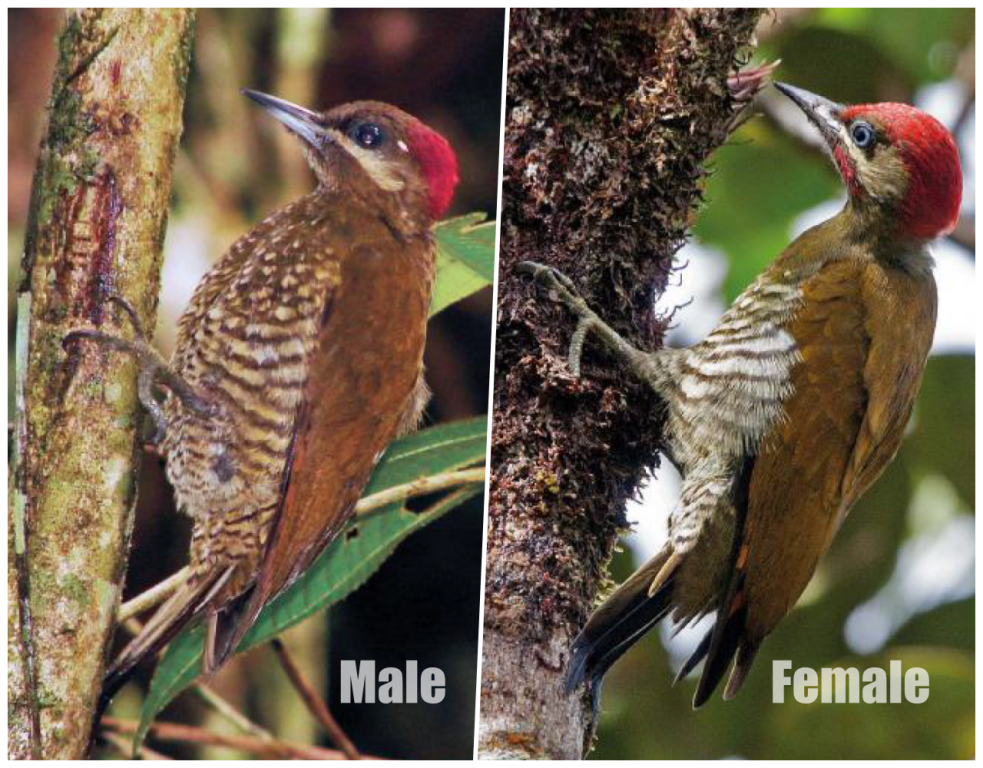Family: The Stripe-cheeked Woodpecker (Piculus callopterus) belongs to the Picidae family.
Movement: The Stripe-cheeked Woodpecker is found throughout the year in its suitable range.
Vocals: A repeated two-note call, first note a nasal wheeze, second a sharp rising squeak, varying in pitch and rhythm. Repeated nasal, mewing, squeaky notes, and yapping chatter in encounters and conflicts presumably when excited.
Habitat: Stripe-cheeked Woodpeckers typically live in tropical, humid foothill forests.
Range: It is mainly endemic to Panama. Scattered in the East to extreme eastern Darien Province – possibly in adjacent Colombia. Isolated population in extreme East Cocle Province (Las Minas, on Caribbean slope N of El Valle de Anton) and records from Western Panama (Altos del Maria) and Western Colon Province – perhaps extending range westwards. The woodpecker is found mainly at an elevation of 300–900m, but to 1200m.
Identification: Plain olive above with bronze tones. Rump barred olive or yellow. Throat and chest olive, boldly scaled buff, belly, and flanks cream or buff, more widely barred green. Most of the wings are olive, primaries barred rufous, or ochre. The underwings are paler with cinnamon tones. The upper tail is blackish with olive or cinnamon on the outer feathers. Lores are greenish.
The chin is mottled green. Ear-coverts and ocular area are dusky. Buff or yellow moustachial line. Iris bluish-white (incorrectly shown dark in most books). Bill is blackish with a grey base. Legs grey. Both sexes are different: the male has a red crown from forehead to nape, mottled grey, and long, broad red malar; the female has red only on the nape, with a dark grey crown and malar. Juveniles mottled rather than barred below; juveniles of both sexes are more like adult females as lack red crown and malar.

Taxonomy and variation: Monotypic. Formerly lumped with Rufous-winged and White-throated Woodpeckers.
Similar species: Most like the Rufous-winged Woodpecker (though does not overlap), but that species lacks a yellow mustache (though sometimes present on juveniles). Sympatric Golden-yellow Woodpecker has a similar face pattern but is much larger, has a yellow throat, lacks rufous primaries, and differs in calls and habitat.
Food and foraging: The food consist of arboreal ants and other invertebrates, but detailed information lacking. Forages at low and mid-levels, singly or in pairs, and joins mixed-species feeding flocks.
Size: The woodpecker is 6.7 inches long.
Drumming: Stripe-cheeked Woodpeckers may not drum, or perhaps only rarely.
Status: Uncommon and localized. Range-restricted, but considered stable and not threatened.
Read More – The White woodpecker (Melanerpes candidus)







